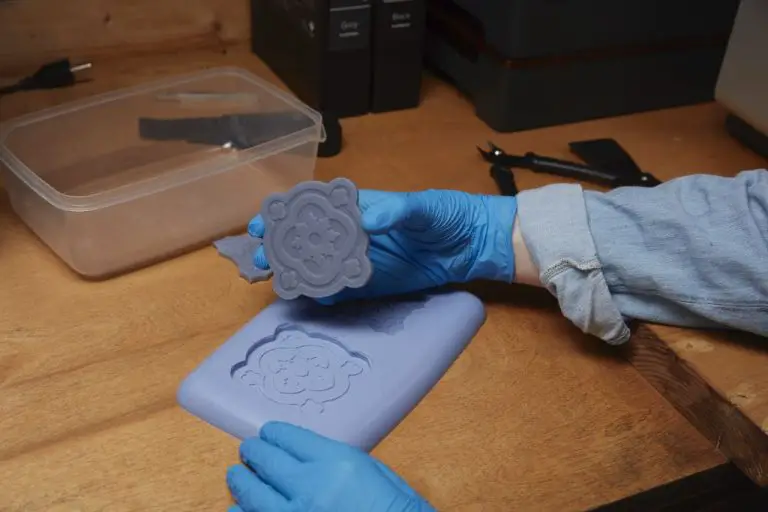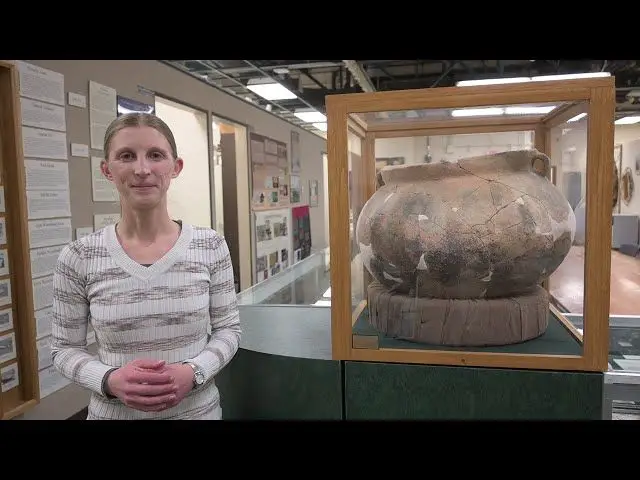How Do You Write Cuneiform On Clay?
Cuneiform is an ancient system of writing that was used in the ancient Middle East. The name comes from the Latin word “cuneus” meaning “wedge” because cuneiform scripts are composed of wedge-shaped signs impressed on clay tablets.
Cuneiform first emerged in around 3500 BCE in ancient Sumer (modern southern Iraq). The earliest cuneiform tablets contain pictographic writing, depicting objects like sheep and temples. Over time, the writing system evolved to include more abstract signs representing syllables.
Cuneiform was used to write several languages including Sumerian, Akkadian, Elamite, Hittite and Old Persian. The script was in active use for over 3000 years, the longest of any writing system. It was still in some use as late as the 1st century CE, although by that time alphabets were in wider use.
At its height, cuneiform was used across a region stretching from modern-day Iraq to eastern Turkey and Iran. Thousands of clay tablets with cuneiform inscriptions have been uncovered, revealing much about life in the Ancient Near East. Cuneiform provides an important window into early mathematics, literature, law codes and religious practices.
Needed Materials
The key materials needed for writing cuneiform on clay are:
- Clay tablets – These serve as the “paper” for writing cuneiform. Tablets were made from clay dug from river banks and were shaped into rectangles or squares. They provided a durable surface that could preserve the impressions of cuneiform writing for thousands of years.
- Clay – The clay used needs to be fine and smooth enough to hold the wedge impressions of cuneiform characters. Clay high in silica content works best as it does not crack when dried.
- Stylus – A stylus with a wedge-shaped tip is used to press into the clay to form the cuneiform characters. Styluses were generally made from reeds.
- Water – Water is used to moisten and soften the clay so that it can be shaped into tablets and accept the impressions of the stylus.
Having these basic materials – clay tablets, clay, a stylus, and water – provides what is needed to effectively write in the cuneiform script.
Preparing the Clay
The preparation of clay is an integral step in writing cuneiform on clay tablets. Kneading and wedging the clay helps achieve an even consistency and removes air bubbles.
Start with a ball of clay and knead it for 5-10 minutes. Use the palm of your hand to press down and smear the clay against a hard surface. This helps blend the moisture and softens the clay. As you knead, fold the clay over itself and press down firmly to push air bubbles out.
Next, cut the clay in half. Hold one half steady and use the palm of your hand to flatten and smear the other half against it in a forward motion. This is called wedging and further blends the moisture and removes air pockets. Rotate and repeat until the clay is smooth, soft, and pliable.
The proper clay consistency should be firm but still moist enough to make clean impressions. Test by poking with your fingertip – the clay should be smooth and not crumbly. If needed, spritz water and knead again. The clay is now ready for shaping into tablets.
Shaping the Tablet
Once the clay is prepared, the next step is to shape it into a tablet. This involves flattening the clay into a rectangular tablet shape and smoothing the edges. The typical size for a cuneiform tablet is around 2 to 3 inches wide and anywhere from 3 to 6 inches tall, though sizes can vary.
Start by firmly pressing and flattening the clay between your palms or using a rolling pin on a flat surface. Flatten the clay into a rectangular shape, taking care to maintain even thickness. The tablet should be around 1/4 to 1/2 inch thick.
Use your fingers, a dull knife, or other smoothing tool to neaten the edges and corners. Take your time smoothing out any irregularities until you have a nice even rectangular tablet. This helps create clean lines for the cuneiform impressions.
Lightly etch horizontal lines across the surface of the tablet with a blunt stylus or tool. These guide lines will help keep the writing straight and evenly spaced. Etch lines about 1/4 to 1/2 inch apart. Some tablets had vertical guide lines as well. The etched lines will show up when the tablet is dried or fired.
Learning the cuneiform writing system
The cuneiform writing system consists of wedge-shaped marks made by a reed stylus pressed into soft clay. The wedges stand for phonetic values, syllables, and entire words. The orientation of the wedges is significant – vertical wedges represent syllables, while horizontal wedges represent full words.
Cuneiform has about 600 signs that represent syllables like ba, ab, ib, ub, etc. It also has signs for whole words like “bread” or “water.” The combination of syllabic signs and word signs allows scribes to write the Sumerian and Akkadian languages used in ancient Mesopotamia.
Learning to write in cuneiform takes practice. It involves memorizing the different wedge shapes and orientations, and their corresponding phonetic values. With time and effort, you can master the cuneiform system and write words and sentences on clay tablets like an ancient scribe.
Holding the Stylus
When writing in cuneiform, it’s important to hold the stylus properly to create clear and accurate impressions in the clay. The generally accepted method is to hold the stylus between the thumb and index finger, while bracing it against the middle finger.
Grip the stylus about two-thirds of the way up the shaft. Don’t grip too tightly or you may tire more quickly. Hold it firmly enough to maintain control, but not so tight that your hand cramps.
Angle the stylus at roughly 60 to 75 degrees relative to the clay tablet. Holding it straight upright at a 90 degree angle can make it harder to imprint the wedge shapes. The sharper angle allows you to more easily press the triangular end into the clay.
As you gain experience writing cuneiform, you’ll develop a feel for the proper stylus grip and angle. But keeping these basics in mind can help you imprint clear wedges as you learn the writing system.
Making impressions
Creating cuneiform letters and symbols requires applying the right amount of pressure to make clear but shallow impressions in the clay. The depth of the impressions should be relatively uniform across the tablet. Since cuneiform has many wedge-shaped marks, pressing too deeply will result in overlapping or unclear marks. The stylus should be held at a right angle to the surface and pressed into the clay firmly, but not too hard.
Aim for a depth of only 1-2 millimeters so the marks will stand out but the stylus will not likely pierce through to the other side. Use the size, shape, and bevelled tip of the stylus to control the depth. You may need to adjust the amount of force used as you make different size marks, with the wider wedge shapes requiring a bit more pressure than strokes for smaller signs. Take care not to drag or twist the stylus, as this can distort the impressions.
Making uniform impressions takes some practice. Start with single strokes and work up to full characters and words. The clay should be soft enough to make neat marks easily but firm enough to hold fine details without smearing.
Common mistakes
Making clear and legible cuneiform impressions takes practice. Some common mistakes to avoid include:
-
Pressing too deep into the clay – It’s easy to get carried away and press too firmly, resulting in deep grooves that are difficult to interpret. Use a light touch and don’t dig into the clay.
-
Uneven size and spacing of characters – Try to make each impression about the same size and evenly spaced. Keep the stylus at the same angle as you press into the clay.
-
Sloppy characters – Rushed or careless impressions often result in uneven, distorted characters. Take your time and aim for clean, crisp wedge impressions.
With focus and patience, your cuneiform writing can become uniform and legible over time.
Drying the Tablet
After making your cuneiform impressions, it is crucial to allow adequate drying time so the clay can harden properly. The drying process enables the clay to become firm and retain the shape of the tablet and clarity of the impressions.
Fresh clay tablets need to dry slowly to prevent cracking or crumbling. Place the tablet in a cool, dry, dust-free location out of direct sunlight. Leaving it on a flat surface overnight allows moisture to evaporate gently. Rushing the drying risks deforming the soft clay.
To assist drying, you can put the clay tablet on a mesh screen or rack to allow air circulation all around it. Turn it over halfway through drying so both sides have equal contact with the air. Test gently after 24 hours to see if it has hardened sufficiently before handling.
Once fully dry, store clay tablets very carefully to avoid damaging the impressions. Wrap in soft fabric or place inside protective boxes. Avoid stacking other objects on top that could crush or shatter the dried clay. Handle gently when transporting. With proper drying time and ongoing safe storage, cuneiform tablets can remain intact for thousands of years.
Cuneiform Resources
There are many great resources available to learn more about cuneiform writing and see ancient tablets:
Books
Some excellent books for learning about cuneiform and the ancient languages written with it include:
- Cuneiform by Irving Finkel and Jonathan Taylor – A comprehensive overview of the history and evolution of cuneiform writing.
- Beginner’s Guide to Cuneiform by Peter Dubovsky – A primer on the basics of the cuneiform writing system.
- The Royal Correspondence of the Assyrian Empire – A collection of translated ancient cuneiform tablets documenting royal letters and decrees.
Online Tutorials
Many museums and universities offer free online tutorials and courses on reading and writing cuneiform:
- Penn Museum’s Cuneiform site has sign lists and lessons.
- Open Richly Annotated Cuneiform Corpus (Oracc) provides resources like CDLI Paleography tutorials.
- CDLI offers an introduction to cuneiform with examples.
Museums
Many museums around the world house Mesopotamian collections and cuneiform tablets:
- The British Museum in London has an extensive collection.
- The Louvre in Paris displays many tablets from ancient Sumer.
- The Vorderasiatisches Museum in Berlin holds a variety of artifacts with cuneiform inscriptions.


